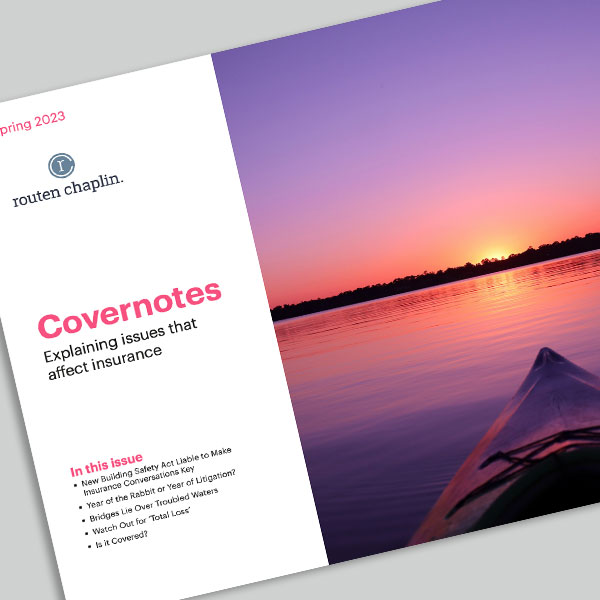What is a Personal Accident policy?
30th April, 2019
Employers’ Liability (EL) is a compulsory insurance for all businesses with employees, paying compensation and legal fees if an employee or ex-employee sues for illness or injury caused by the work they do under your employment. UK businesses currently pay out around £2.7 billion a year for liability claims, and in 2018, EL claims accounted for around fifth of this amount, worth some £573 million. With trends in EL claims on the up, we look at the supporting role that Personal Accident (PA) insurance can take.
A PA policy provides payment to the employer (the policyholder) if an employee cannot work due to injury (or sickness, which is optional). It’s up to the employer whether to pass on all or some of this benefit to the employee or use it to support their business.
EL, on the other hand, focuses on the employer’s negligence and can involve long drawn out, potentially stressful, litigation. Many claimants only take this route if there is no other means of obtaining recompense for their illness or injury.
Key differences between Employers’ Liability and Personal Accident
Employers’ Liability
- The EL claim can only be successful if the employer is legally liable
- The EL claimant’s legal team will scrutinise work practices to find evidence of the employer’s negligence.
- The loss must be quantified in terms of medical treatment, loss of earnings, future care costs and other considerations.
- Payment is made to the employee.
- The relationship between the employer and employee may become strained.
Personal Accident
- The only requirement of a PA claim is that the employee suffer an injury that prevents them from performing some or all of their duties.
- No investigations are required to complete the PA claim
- Amounts are pre-agreed and can be quickly paid out, so that rehabilitation or medical treatment can start sooner
- Payment is made to the employer, who can pay it to the employee direct or put it towards the cost of rehabilitation which may mean the employee returns to work sooner and in better health.
- The money paid to the employer can be used to help the employee return to work sooner and healthier by providing access to rehabilitation services.
Some scenarios fit clearly into one camp or the other. In the case of an employee who is diagnosed with an incurable industrial disease that arose over a period of time, it must be an EL claim, as there is no identifiable accident, required by a PA policy. On the other hand, an EL claim couldn’t help a delivery driver who can’t work because of a wrist injury sustained outside of work. A PA policy, with 24-hour cover, could help, enabling the employee to receive their wage and the employer to pay other drivers to cover the workload.
If an employee tripped over cables and fractured their wrist, rendering them unable to work, the employer could claim on their PA policy, enabling the employee to still receive a salary along with money for rehabilitation services. In this scenario, the employee could still make an EL claim against their employer, but the swift settlement of the PA policy could reduce the incentive for the employee to make an EL claim.
As can be seen, a Personal Accident policy can be used to support EL cover, with beneficial results for both employer and employee. It helps employers to take care of employees and may also reduce the possibility of future litigation.
A PA policy is definitely worthy of consideration alongside your Employers’ Liability insurance. To find out more, talk to Routen Chaplin and we will be happy to explain further.
Source:
A BIBA brokers’ guide to employers’ liability insurance

